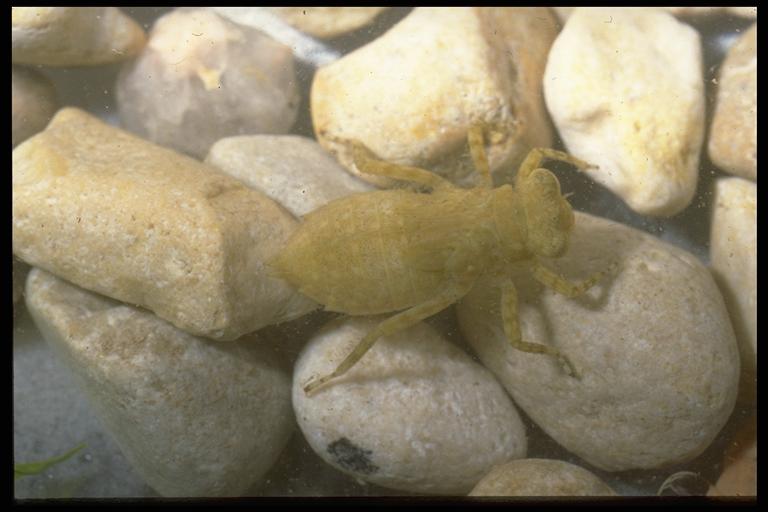
Common skimmer, Libellula luctosa Burmeister (Odonata: Libellulidae), male. Photo by N. Mirro.
Common Name: Skimmer, dragonfly
Insect Order: Odonata
Scientific Name: Varies
Description: Skimmers are the most common and colorful of the dragonfly family. They have two pairs of large, usually patterned, gossamer wings. The hind pair of wings is slightly larger than the forewings. The wings are held flat and extend outward from the body when at rest. The abdomen is long and variously colored. Commons skimmers are the most common and most colorful of the dragonflies. Male and female adults are different in appearance (dimorphic). They also change color with age. They have large compound eyes and short antennae and are equipped with chewing mouth parts. They vary in length from 1 inch to over 3 inches. Their wing span can reach about 4 inches.
Life Cycle: Simple metamorphosis (egg, nymph, adult). Immature stages are aquatic and do not resemble adults. Adults emerge in the spring, summer or fall and live for a few weeks to a few months. Adults mate in flight, the male clasping the female behind the head. After fertilization, the female deposits her eggs in emergent plants, floating vegetation or directly into the water. Nymphs develop in the water and take months or even years to develop to maturity. Once mature they climb from the water onto plants or rocks where they molt into adults. Most species of

A dragonfly, nymph. Photo by Drees.
dragonflies have one generation per year.
Habitat, Food Source(s): Nymphs can be found in vegetation and hiding around underwater structures. Adults feed on insects such as mosquitoes, midges, flies and winged ants. Skimmers fly mostly during the day. They are called skimmers because they tend to fly low over the water. They often follow the same path and return to a familiar perch.
Pest Status: Skimmers are beneficial insects. Adults feed on mosquitoes, flies and other flying insects. Nymphs feed on aquatic insects, even small fish.
For additional information, contact your local Texas A&M AgriLife Extension Service agent or search for other state Extension offices.
Literature: Borror et al. 1989; McCafferty 1981.